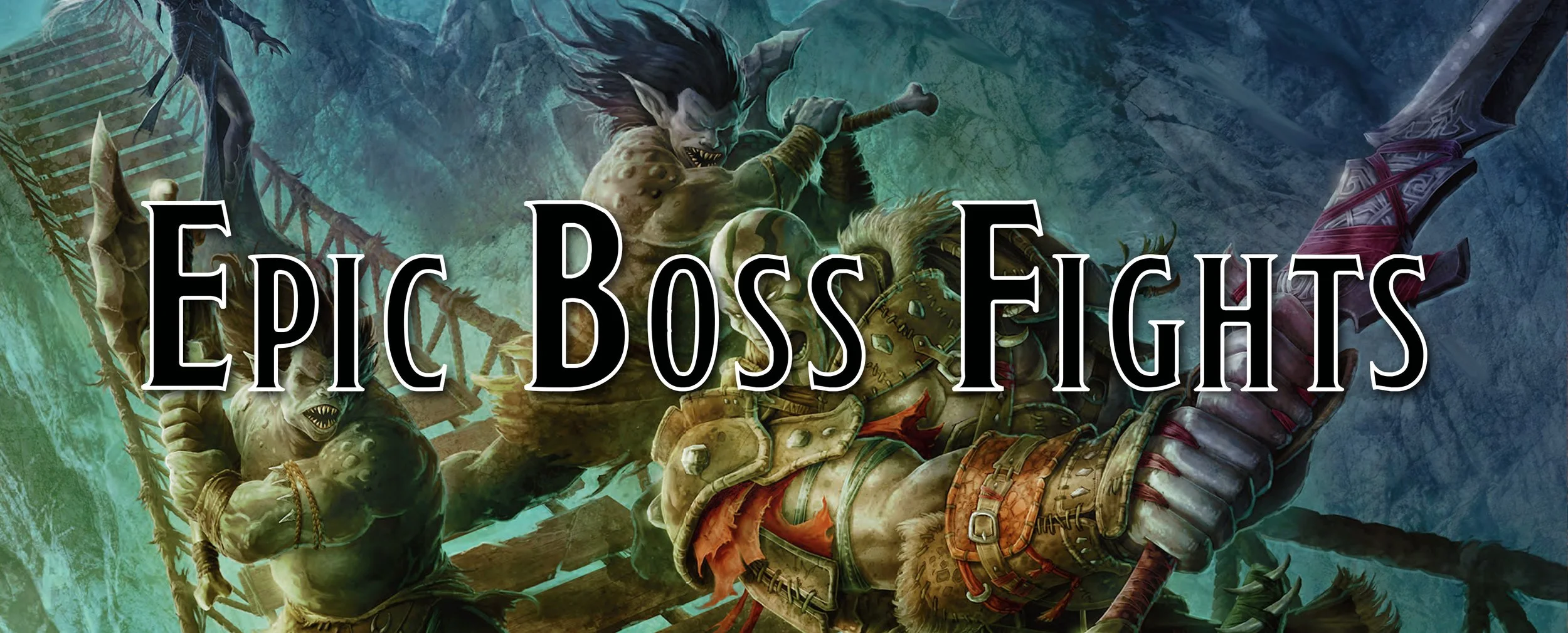Why Is That Trap There? 10 Reasons For Traps, Puzzles, and More
Header Art: Dungeon Master’s Guide (2008) by Wizards of the Coast
I tend to hesitate when adding traps and puzzles in my games. I want puzzles, traps, and hazards to all make sense in the context of where they are. Sometimes it’s hard to come up with that reasoning, so instead of coming up with the reason, I just do without the trap or puzzle. But not anymore.
Below are 10 reasons why a trap, a puzzle, a hazard, or some other weird thing exists within your dungeon, noble’s manor, or mausoleum. If you have your own way of adding in traps and puzzles, share down below!
1) Test of Worth
Within the complex is a great treasure or esoteric artifact. Anyone who wishes to gain this fabled treasure must prove their worth. These ancient traps and puzzles ensure that anyone who gains access to the treasure understands that there is a great responsibility on their shoulders.
When using traps and puzzles in this way, you can highlight the lore surrounding the item or give insights into the ancient builders. Maybe they left runes in an ancient tongue letting the party know that only the worthy can solve the puzzles or that within the stone walls lie an ancient power that only a chosen few can lay claim to. Maybe there is a final inscription that simply asks the adventurers to bring the item back when they are done and to reset the traps and puzzles so that other adventurers are also tested for worthiness.
2) Battle of Minds
The designer of this dungeon decided that no one is allowed to have the items protected within if they are less intelligent or clever than them. So they created complicated puzzles, odd riddles, and well-hidden traps to weed out any ‘lesser’ adventurers who can’t match the raw intelligence and cleverness of the designer.
This ego-trapped dungeon is a testament to how clever the designer is, as they can finally create traps and puzzles that others didn’t want in their dungeon. Now they get to create the perfect trap to truly measure just how adventurous your adventurers are. These traps and puzzles can be off the wall, absurd, or just plain unfair (so long as you highlight the designer of the dungeon as the one that is screwing with the party - this gives them someone to focus their dislike towards and not onto the game).
3) Magically Trapped Lock
This trap is a magical lock that must be solved in order to disarm or open the passageway. If the correct combination isn’t entered, it becomes a dangerous trap that will test the adventurer’s abilities and skills.
This type of lock is massive and complex - but everything has a reason for being there, including the guillotine which is actually a giant pendulum that helps the lock stay on time and cuts down anyone who attempts the lock incorrectly. This type of trap requires the party to research how to bypass the trap or be incredibly clever when it comes to successfully dismantling the lock. If they try to destroy the trap without interacting with the lock mechanism, than it destroys the lock and they are unable to progress until they repair and attempt to unlock the trap again.
This massive type of lock/trap could also be as big as the dungeon, requiring the party to trigger certain parts of the lock at specific times - which doubles as pushing them to complete things in a single day, limit their short rests, and push themselves to complete the dungeon with a time crunch. They are literally fighting against the dungeon to win against it.
4) You Shouldn’t Be Here
This trap is actually quite simple… once someone explains how to actually get through it. See, the traps and puzzles are only here to dissuade others from entering the dungeon (though it seems to have the opposite effect). Only those who have been told the correct sequence are supposed to be able to get past the puzzles and traps.
These traps could be absurd. They could be dumb. It doesn’t really matter to the designers so long as it does its job—keep those dirty adventurers out of their lair and stop them from stealing all the valuable treasure!
5) Crumbling Dungeon
Those traps and puzzles? It’s actually just the dungeon slowly crumbling away. Any puzzles are just the adventurers trying to figure out how to open a door that has been wedged shut by fallen rubble. If they figure out the ‘puzzle’ wrongly, it causes the ceiling to collapse on them introducing a new trap that they must overcome.
There are hundreds of lost and forgotten dungeons, and sometimes those dungeons don’t exist until they have become lost and forgotten. Time takes its toll on everything, causing destruction and decay to take over. By simply reflavoring traps and puzzles as part of a crumbling architecture, you can utilize them freely throughout the dungeon to truly test your adventurer’s skills!
6) Cruel Beyond Measure
The entire purpose of this dungeon is to inflict pain and suffering. First, you build the deadliest dungeon possible. Second, you spread rumors of the vast treasure hoards within. Third, you watch as adventurers far and wide throw their lives away in your dungeon of death. On the rare occasion, you might let an adventurer out with some treasure, to help spread the rumors - but on the whole, it’s all about pain and torment.
This dungeon is designed by demons, devils, ancient undead beings, and others who simply wish to see suffering spread through the planes. They don’t so much care if someone succeeds on a trap or puzzle, what they like to see is that pain and suffering continue even after they pass on to the next world. Then again, a lich needs a steady supply of souls to live and they think that tormented souls taste the best.
7) Entertainment
It’s boring if nothing happens or if you allow adventurers to just walk unharassed through the dungeon. Wouldn’t it be funny (to the Game Master and the monsters in the dungeon) if you had them deal with random traps and puzzles that are cobbled together?
While this style of dungeon is similar to Cruel Beyond Measure, you can have greater fun with it. You might describe the traps and puzzles as very ‘homemade’ with weird parts. Maybe chickens are the main component of one trap (and used in ways you just can’t talk about—the chickens know what they did) while another puzzle has misspellings and grammatical errors because goobins no spek gud all to taunt and mislead the players.
Regardless of what or how the traps and puzzles are assembled, there are ways for the inhabitants to watch adventurers attempting them. The inhabitants might even gamble loudly about the adventurers’ progress, or one puzzle-maker might take it as a personal insult if someone complains about how hard or easy the puzzle was. Bonus points if the adventurers trick the designer to come down from their perch and show the adventures how to solve the puzzle for them.
8) Bragging Rights
An eccentric designer has the greatest ideas for traps and puzzles, but hasn’t found anyone willing to actually try it. The designer has no idea why no one wants to try out their ‘escape dungeon’ but they are pretty confident that if they put enough gold in there, someone is sure to come and try and get it.
Perhaps the designer just wants entertainment, perhaps they simply want to test their wits against another. Regardless, they are building something that they want others to do and they offer prizes, rewards, and scores for anyone who does take on their dungeon. They may not even let you die if you do well enough at a few of their favorite traps and puzzles.
9) Imprisoned
Look - whatever is down there should never be released. It needs to be destroyed, but the dungeon designer didn’t have the power to do anything but imprison it. They need someone to go down there and destroy the entity, but they worry that if they let just anyone in, it will only strengthen the entity or give the entity a chance to escape. Because of that, there are complex traps and puzzles along the way to not just test the worthiness of someone, but also to make sure that they are physically powerful enough to destroy the entity.
While this is similar to Tests of Worth, in that you are making sure someone is strong enough to reach the bottom - there is a greater emphasis on the physical. Worthiness might come from knowledge, from an adventurer’s moral (alignment) while this dungeon doesn’t care if you are evil, just so long as you are powerful. These traps and puzzles don’t measure your ability to recite prayer or know about ancient kings, but your ability to decimate and destroy.
10) You Don’t Need A Reason
While I’ve given a few reasons why you might have a trap or puzzle, let me just clarify that you don’t actually need a reason. No one complains that a video game they play has a puzzle or a trap. No one complains that to kill Ganon you have to solve an air puzzle. No one cares that there is a trap in Bloodborne that first tricks you into thinking you will be hit by a log (and you easily avoid it) and then the ropes snap and it comes barreling toward you (probably killing you in the process).
While there might be ‘reasons’ for those traps, they aren’t required. We are just excited to play the game, solve the mystery, and defuse the bomb. If it is entertaining, and kind of sort of fits into the general theme and vibe of the setting, then we don’t care. We like a challenge, especially one we overcome through cleverness.
Like what we are doing here?
Support us on Patreon!
You’ll get early access to deep dives, our Homebrew Hoard, monster stat blocks and more!
Follow us on Twitter to keep up to date on everything we talk about!



